If you love aquariums, you are probably a fan of those that include as much of the natural surroundings of fishes as possible. Fishes that live in captivity need a space that feels comfortable and familiar.
Therefore, there is no better way to provide them with that than by adding plant life into your aquarium. Besides the many benefits an aquarium plant has to offer to your fish, they are also an excellent decoration for your aquarium.
However, taking care of fish is already a process, so the additional work required to take care of the plants might discourage some people. Therefore, low light aquarium plants are an excellent option for those looking for something easy and low maintenance. Let’s take a look at the best options for your aquarium.

Things You Should Know About Low Light Aquarium Plants
If you are interested in adding some plants to your aquarium, you should research what is best for your aquarium and what plants will coexist better with your fish. This is important because you should look at your aquarium as a small ecosystem. If you introduce plants that do not fit with the current species in your aquarium, you might disrupt that ecosystem and affect the organisms already in it.
Plants are generally divided into two categories — column feeders and root feeders. Their name is related to the way these plants feed inside an aquarium. This is important because the category they belong in will tell you what you must do or should not do in your aquarium to include them.
Root feeders feed from the substrate through their roots, so you must ensure that the substrate in your aquarium is rich in nutrients. Column feeders feed on the nutrients from the water column, which are the chemical and physical characteristics of the water in your tank.
A low light plant is easy to care for because it can bloom in very low light. This solves a big challenge that many aquarium owners have in trying to maintain aquatic plants. Lighting is a critical factor for the growth of an aquatic plant, but in smaller ecosystems such as an aquarium, it becomes more challenging.
Most of the time, an LED aquarium light is required to provide the lighting that plants need, but you need to be careful because a light that is too strong might negatively affect your plants and fish. Moreover, sunlight might also not be suitable for your aquarium plants. Therefore, this is why low light aquarium plants are often preferred.
The most common plants usually used in aquariums are stem plants, floating plants, rosettes, and ferns and mosses. Frens and mosses are generally a good choice for low light aquarium plants as they require very little maintenance.
The Benefits of Aquarium Plants
Besides the fact that aquatic plants can be beautiful additions to your aquarium, giving it a stunning decorative look, they also have a lot of benefits for the overall well-keeping of the aquarium.
As mentioned earlier, one of the most important benefits of aquatic plants is that they essentially allow the recreation of the fishes’ natural habitat. This is important as they enable fish to practice their natural habits during their life cycle. For example, fish often use ferns as a sanctuary to breed and lay their eggs. Fish also tend to hide in ferns when they feel stressed.
Moreover, adding plants stabilizes the substrate in your tank that a water filter’s force could disrupt. Like all other plants, aquatic plants also oxygenate the water through photosynthesis, so your fish can absorb more fresh oxygen. Finally, aquarium plants can reduce algae growth in your tank since they feed on the same nutrients.
11 Best Low Light Aquarium Plants for Your Tank
Let’s take a look at the top 11 low light aquarium plants that will be perfect for your fish and embellish your tank.
1. Java Fern

Java fern is a very common choice for low light aquarium plants, especially for beginners that look for something very low-maintenance. It is generally a vigorous plant as it can grow in various light conditions—though it grows at a slower pace. This is why it does not require that much effort to be taken care of.
The Java fern has long, edged leaves that fill up space in tanks but does not take over completely. Moreover, fish do not tend to eat it, so you will not have to worry that they might start biting its leaves. It is an overall very safe choice.
2. Rotala Rotundifolia

Rotala rotundifolia, also known as dwarf rotala, is another stem plant that can change color based on the light it absorbs and its position underwater or submerged. It gets its signature red color under medium to high light.
Moreover, when it is submerged, it will grow more edged reddish leaves. While being emerged, this plant will grow more rounded green leaves. Finally, due to its dense look, it needs to be trimmed quite often so light can get to the lower parts of it.
3. Anubias Barteri
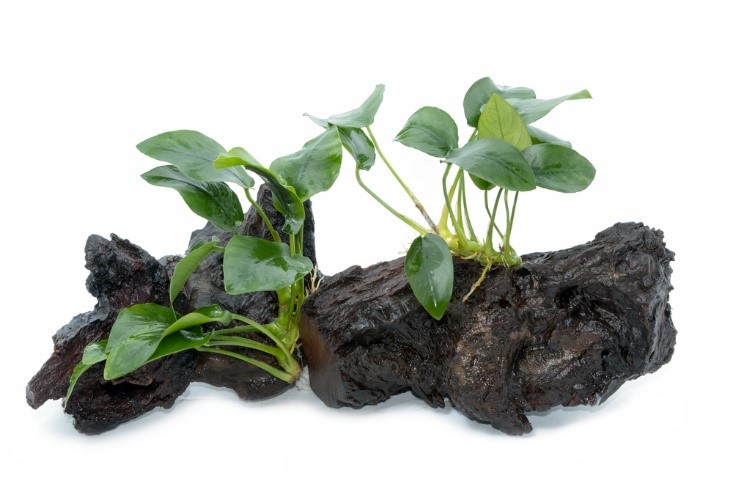
Anubias barteri is a relatively small plant that does not grow much during its life. It also typically grows slower, which is why it is another great choice for beginners. It comes in different varieties, so people can easily add them to their aquariums with few adjustments.
For example, it can be positioned at various water levels and shady areas. One thing to note is that it is a root feeder, so you must ensure that your substrate has enough space for its roots to grow.
The leaves of Anubias barteri are tough, large, and heart-shaped, with rippled edges. Most types of fish usually avoid it because it has an unpleasant taste. However, it is advised that you include it in aquariums with some algae-eating fish as it tends to accumulate a lot with time.
4. Java Moss

Java moss is another excellent choice because fishes prefer it for its ability to provide hiding spaces. It is a great choice if you hope your fish will start breeding. However, for the same reason, it also accumulates a lot of waste, so you will need to pay extra attention to the cleaning process.
It usually attaches itself to wood and rock in and out of the water, which is considered an easy addition to any tank. Moss flourishes with a lot of humidity, so you will have to make sure to keep a lot of moisture inside your tank.
5. Guppy Grass

Guppy grass is one of the easiest aquatic plants to take care of because it can actually grow under almost any condition. Much like mosses and ferns, it is also liked by fish and used for hiding when they are breeding and laying their eggs. This is because guppy grass has thin, soft leaves that grow in dense clumps and can support eggs. As a matter of fact, its name refers to the fact that guppies use it to lay their eggs.
6. Green Hygro

Unlike most other low light aquarium plant options on this list, the green hygro grows faster. It is a root feeder stem plant, so it will need a lot of space to grow. It can change its color depending on the light present in the tank. Low lighting is preferred if you hope to retain its green color.
However, you should also be aware that green hygro is a prolific plant due to its rapid growth. Therefore, you must keep monitoring it so it won’t take over your entire aquarium.
7. Amazon Sword
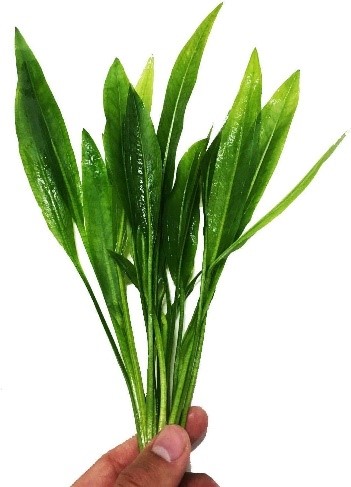
This plant is for those looking to fill a lot of space in their tanks and is ideal for people with large aquariums. The Amazon sword grows large and quite tall. Because of its immense size, this plant requires a lot of nutrients, so you will need a nutrient-rich substrate since it is a root-feeder. However, it still does not require a lot of effort on your part to care for it.
8. Anubias Nana

Anubias nana is in the same family as the Anubias barteri, but it is smaller in size. Much like Anubias barteri, this plant also stays relatively small for the entirety of its life cycle. Though, its arrow-shaped leaves are pretty long compared to its actual size. Like all Anubias, plant-eating fish tend to avoid them due to their bitter taste.
Due to its size, it is also very suitable for medium to small fish tanks. It is also quite adaptable as it can grow both emerged or submerged and usually latches to its surroundings.
9. Hornwort
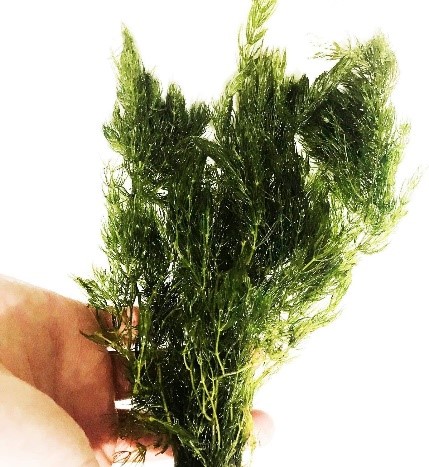
Hornwort is a very low-maintenance plant, but it grows quickly, so it will need pruning. It can be both a floating plant or rooted on the substrate, and it can survive in a variety of situations. It originates from Brittain but can now be found on almost every continent.
It has a unique look with dark green plant colors and lush leaf structure, adding charming aesthetics to your aquarium. It grows well in the background or is attached to its surroundings like wood or rocks. Hornwort also does very well in colder water temperatures.
10. Moneywort
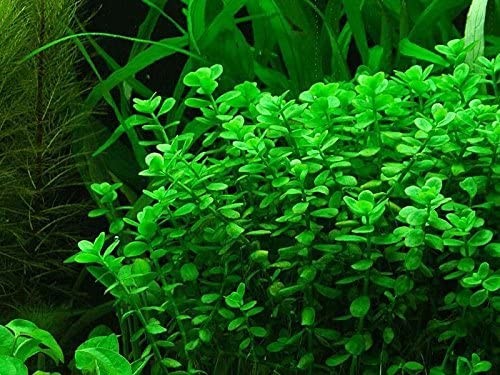
Moneywort is also a root-feeder, so to plant, you must cut its stem at the bottom to allow its roots to grow. For this plant, liquid fertilizer is often used to make it grow even larger and get its vibrant color. It is often used to add a more colorful element to aquariums.
It can grow in land and water, which is why it is often seen in reptile tanks. It is very easy to maintain, and it can adapt to a variety of environments. It also grows quite fast, so make sure to keep an eye on it.
11. Crypt Wendtii
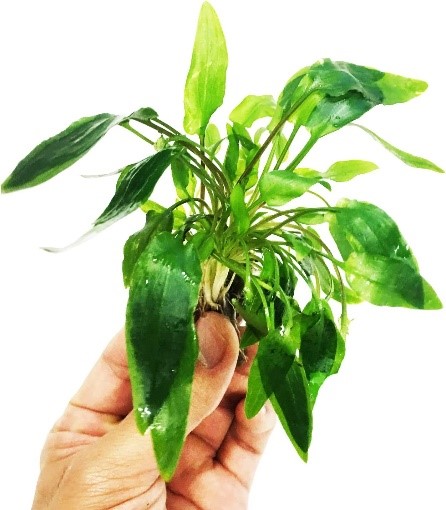
The Crypt Wendtii plant is also great if you want something to fill in more space in your aquarium. Because they come in different sizes, they can adapt to many habitats. However, they may take longer to acclimate once put into a new environment, though they will eventually start growing at a faster rate once they settle in.
More importantly, while it grows fast, it does not tend to get too tall, so you do not have to worry if it will cover too much space in your aquarium. It also comes in a variety of colors, such as green, brown, and red.






